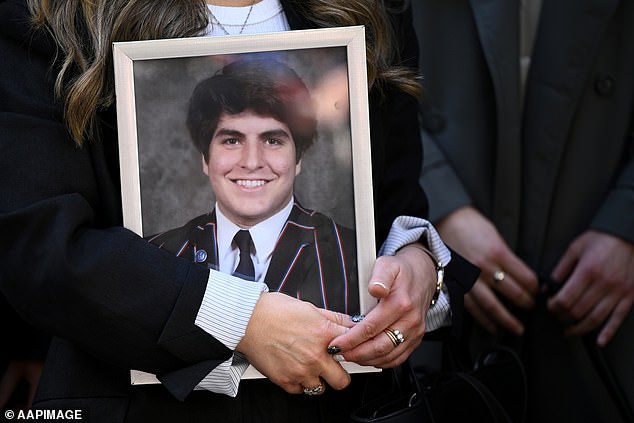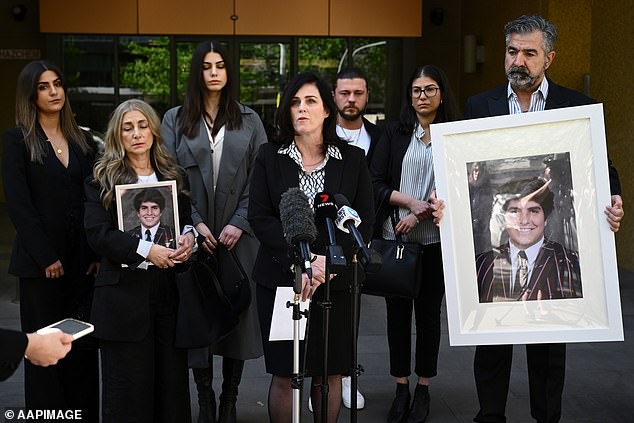How an Australian Teen’s Wheezing After Eating a Burrito Bowl Was a ‘Red Flag’ Before Anaphylactic Death
Wheezing that James Tsindos developed as he was wheeled into a hospital was the ‘sliding door moment’ healthcare staff missed that could have saved his life, a world-renowned doctor has said.
James suffered anaphylaxis after consuming a burrito bowl with a sauce made from cashew nuts that he ordered via the now-defunct Deliveroo food delivery app on May 27, 2021, an inquest was told on Friday.
The 17-year-old suffered allergic reactions due to his sensitivity to nuts, including swollen lips, nausea, tingling in the throat and stomach cramps, prompting his father to call an ambulance.
Paramedics arrived at their home in Brighton at around 2.50pm and alerted him to a possible case of anaphylaxis, despite no rash or signs of difficult breathing being found.
Paramedic Jonathon Hammond administered two doses of adrenaline five minutes apart, which relieved most of James’ symptoms, while he withheld a third due to lack of symptoms, and he was transferred to nearby Holmesglen Private Hospital as a precaution.
“He seemed comfortable (during the ambulance ride) and was able to speak in clear sentences about school and interests,” Mr Hammond told Melbourne Coroners Court.
As he was wheeled through the hospital doors at 3.44pm, James told paramedics he was ‘wheezy’. He then used his asthma puffer fifteen times.
James Tsindos shields his face from the sun at the Brighton Beach Boxes in Victoria. He had a known allergy to certain nuts and died after consuming a small portion of a meal purchased through an online food delivery company

A portrait of James Tsindos is held aloft as Shari Liby, Slater and Gordon Medical Law Legal Counsel speak to the media during the inquest into the death
The teenager was placed in an isolation room while Mr Hammond was conducting a handover with the nurses, which was a subject of debate over whether the nurses were aware of the wheezing symptom.
“It was one of the first things I (told) and so the nurse left to get the puffer spacer,” Mr Hammond said.
At 4:10 p.m., he was given oxygen therapy and administered adrenaline and saline, but had difficulty breathing.
He was transferred to the resuscitation unit and within a minute he became unresponsive before going into cardiac arrest.
Doctors and nurses spent 40 minutes resuscitating James, longer than what would normally happen given his young age.
He was transferred to The Alfred, but due to his brain damage from the cardiac arrest, James never recovered.
His life support was turned off on June 1.
The inquest is investigating whether the medical care given to James was appropriate and whether there are options to prevent the circumstances from recurring.

Shari Liby (center), Slater and Gordon Medical Law Legal Counsel, speaks to the media with the teen’s family
He was admitted to the hospital’s triage under category 3, which indicated an urgent case requiring medical attention within 30 minutes.
But globally renowned intensive care doctor Warwick Butt told the court that James’ initial condition warranted an emergency Category 2 response, with medical care provided within 10 minutes.
“The moment he started wheezing was not a new symptom, but it was a progression of the disease indicating that adrenaline was decreasing,” Dr Butt said.
“That was a huge red flag, a sliding door moment.”
The counselor assisting Rachel Ellyard asked the expert whether an earlier adrenaline injection and a higher dose in the hospital had led to a better survival prospect.
“It’s more likely than not,” Dr. replied. Butt
‘This event was preventable.’

Melbourne’s Tsindos family are searching for answers about James’ death
James’ devastated family are searching for answers to what happened to their beautiful boy, who was filled with laughter, joy and hope, and whether his death could have been prevented, lawyer Shari Liby said outside court.
“The Tsindos family is deeply committed to ensuring that systems are put in place so that no other family suffers even a single loss under these types of circumstances,” she said.
UberEats introduced new features in June, including disclaimers that tell consumers whether restaurants can accommodate food allergy requests.
Menulog urges customers to contact the restaurant to provide the details of their allergies, while DoorDash users can add special instructions and restaurants, an option for allergen requests.
